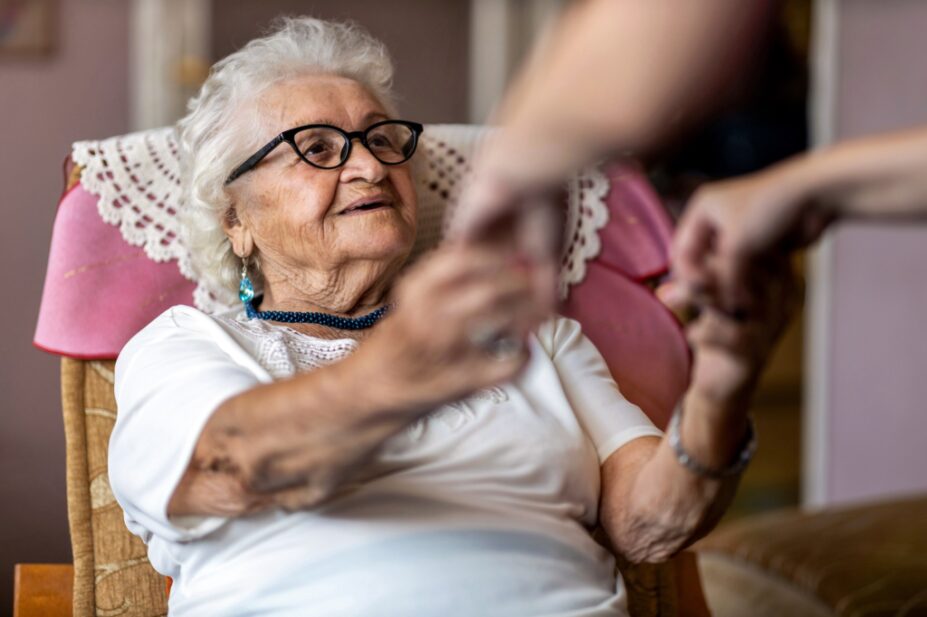
Shutterstock.com
As a specialist pharmacist and independent prescriber working for a hospice charity, my role is to contribute to the overall holistic care of patients with complex symptom management needs. The nature of this role will differ depending upon the environment. Inpatients in our wards at Birmingham Hospice will be reviewed daily, for example, to ensure their analgesia is being titrated safely or that an alternative anti-emetic has been considered. Multidisciplinary input from professionals, such as pharmacy technicians, physiotherapists, occupational therapists and advanced nurse practitioners, is essential to achieving this holistic care.
However, it is in the community setting, in a patients’ own home, where our ability to assess and prescribe for patients helps to reach many of those who are at an incredibly vulnerable point in their illness.
Attending a home visit, either alone or with a clinical nurse specialist, is not a passive event. No two days are the same. Although many of the patients I see have severe pain, I could be reviewing a patient with motor neurone disease and excessive drooling, followed by a patient with metastatic cancer and breathlessness.
Patients living at home with a terminal illness and struggling with the management of their symptoms are the very people who may slip through the net
Patients living at home with a terminal illness and struggling with the management of their symptoms are the very people who may slip through the net, and for whom maximising their quality of life becomes our priority. The depth and breadth of our knowledge and skills as pharmacists is central to our ability to assess a patient from a wider perspective, considering the interplay between other prescribed medicines and concurrent non-palliative diagnoses.
We know from experience that patients in the community benefit from being reviewed by an independent prescriber, but the pharmacy team looked to gather data on our activity and impact. In May and June 2019, our team collected data on the activity of pharmacist prescribers on home visits, identifying 53 medicines prescribed for approximately 20 patients. Almost half of the items we prescribed were analgesics, which highlights that most referrals to us from the community nurse specialists are for refractory pain control. Prescribing of “red formulary status” drugs — which are usually issued by specialist prescribers — and unlicensed medicines during this time was carried out by pharmacist prescribers rather than nurse prescribers. This shows the value that prescribing pharmacists can add by enabling faster access to specialist medicines that can keep people comfortable in their preferred place of care.
To follow up this analysis, we asked the hospice’s three medical doctors about their views of non-medical prescribing. Their comments showed that they all supported nurse and pharmacist prescribing, agreeing that this facilitated better access to medicines. Non-medical prescribing in this context was also judged by medical doctors to be safe.
One of the biggest challenges facing us as prescribers, however, is guaranteeing availability and supply of medicines after prescriptions have been written. Inconsistent stock levels and supply delays have an adverse impact on the ability of a patient or their family members to quickly obtain end-of-life medicines.
A lack of timely access to medicines remains a formidable but not impossible obstacle to overcome
While community pharmacies are locally commissioned throughout the UK to hold stock of essential palliative medicines, including in the West Midlands, such arrangements are patchy and thus inequitable for patients and their families to access. A lack of timely access to medicines remains a formidable but not impossible obstacle to overcome. The arrangements detailed in the Pharmacy Quality Scheme for 2023/2024, which incentivises community pharmacies to stock 16 palliative and end-of-life critical medicines or have an action plan in place if they do not stock these medicines, will go a significant way to ensuring that patients and their families are not left at the mercy of a postcode lottery to obtain their anticipatory medicines.
It is important to remember that the goal to ultimately strive towards is for our patients to have the best quality of life available. Hospices are vital organisations in achieving this goal, acting as a link to community care. But too often they lack the consistent presence of a pharmacist. We are one cog in a complex machinery of health, social and spiritual care professionals, but we must not remain an afterthought. My role as a specialist palliative care pharmacist is undoubtably challenging, exciting and incredibly rewarding. But most of all it is humbling to be allowed into a patient’s home as part of the lived experience of their illness, and to add my small contribution to the care they deserve.


